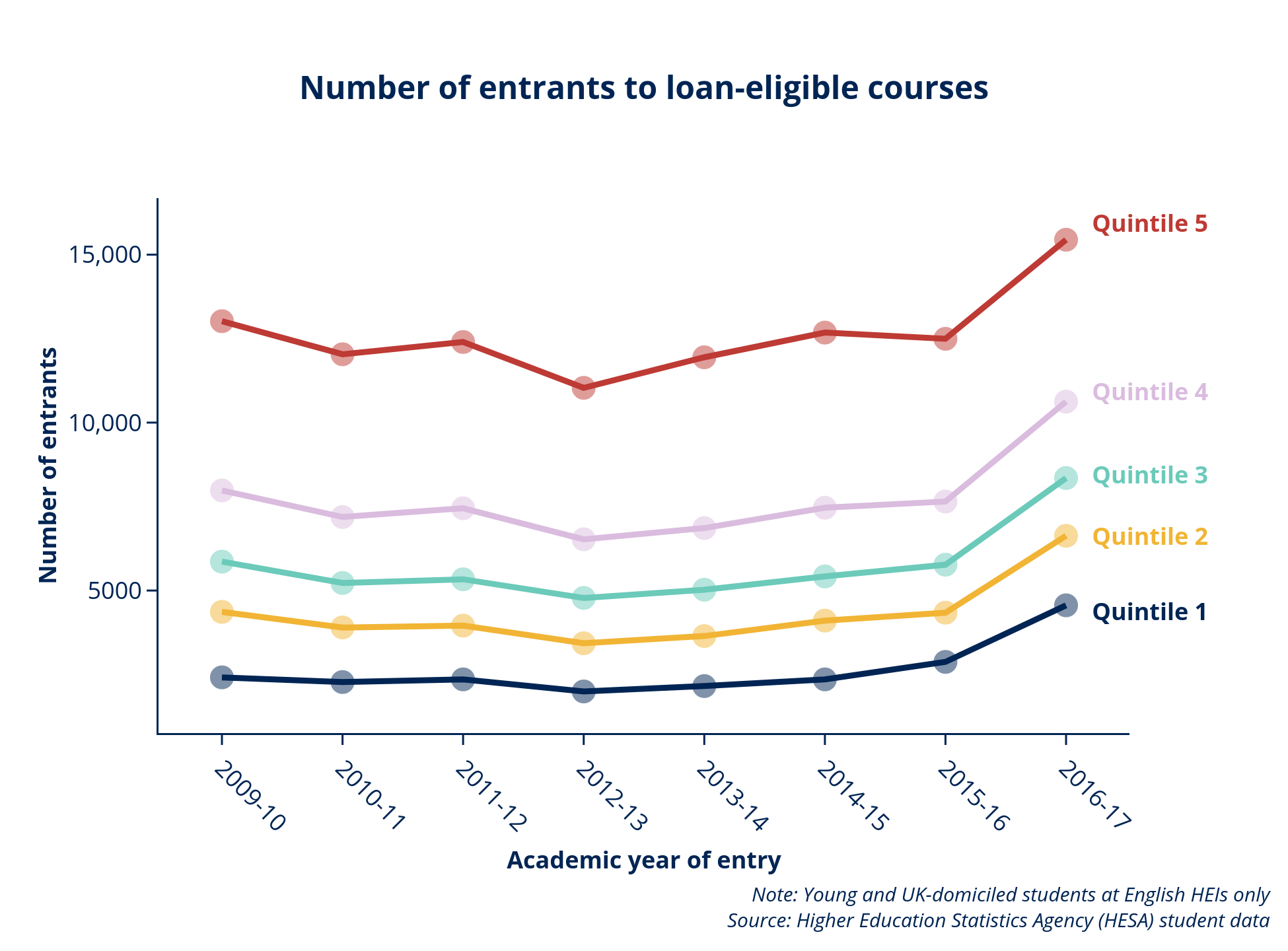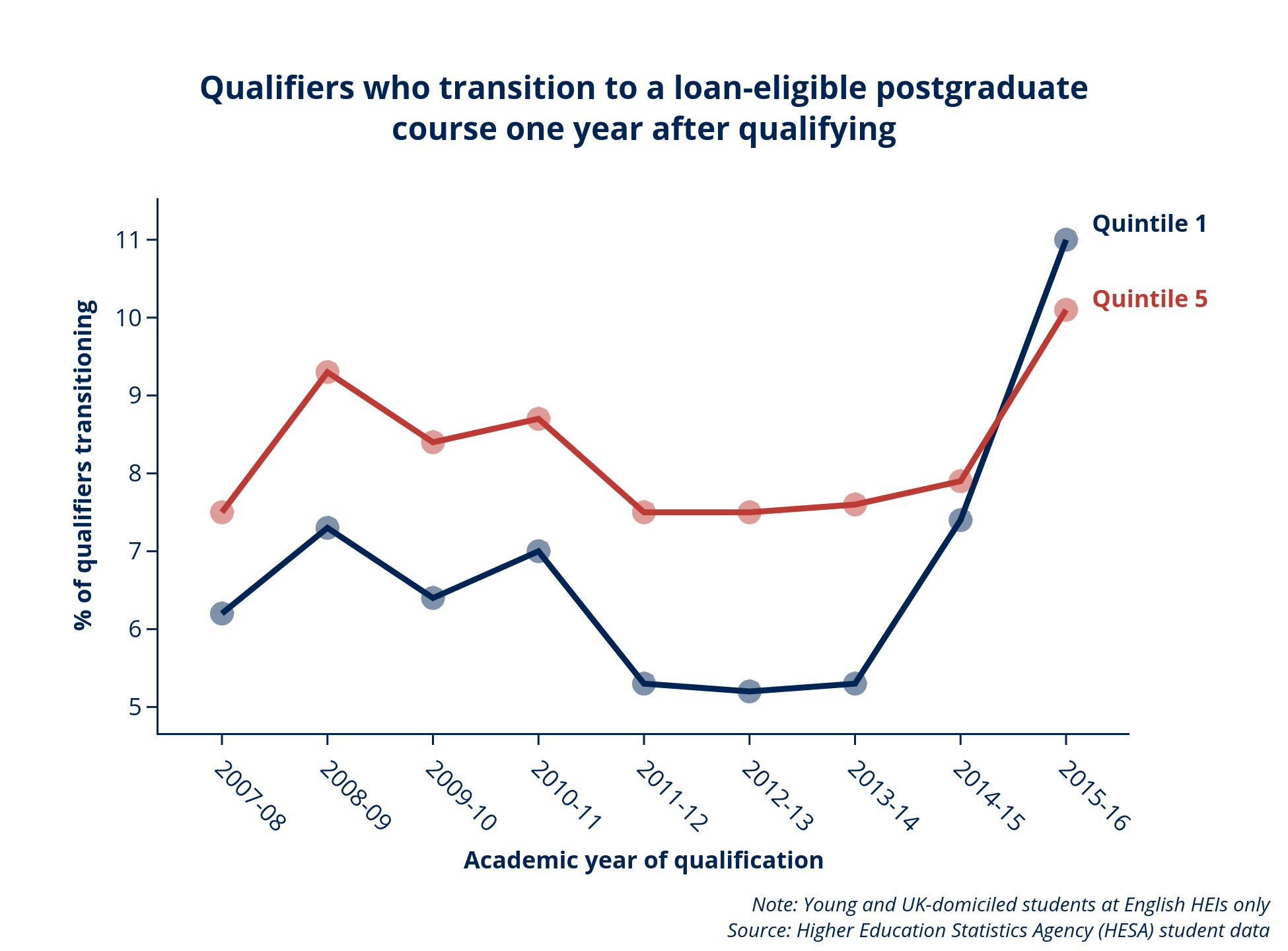The effect of postgraduate loans
Educational disadvantage
Summary
Students from low-participation areas had the highest take-up of loans, but also the largest proportional increase in entrant numbers and one-year transition rates.
This has resulted in a decrease in the gap between the highest and lowest-participation areas in terms of students realising their intentions to undertake further study after graduation.
Analysis has shown that students from low-participation areas are less likely to realise their intentions to study at postgraduate level six months after graduation than students from high-participation areas. But has this difference been reduced by the introduction of postgraduate loans?
Entrants to eligible courses
There has been an increase in entrant numbers from all Participation of Local Areas (POLAR4) quintiles, but the proportional increase in entrant numbers is highest for students from the lowest-participation areas (quintile 1). The POLAR quintile was assigned based on the student's postcode on entry to their undergraduate degree.
The proportional increase in entrant numbers between 2015-16 and 2016-17 was:
- 59 per cent for students from the lowest undergraduate participation areas (POLAR quintile 1)
- 53 per cent for quintile 2
- 45 per cent for quintile 3
- 39 per cent for quintile 4
- 24 per cent for students from the highest undergraduate participation areas (POLAR quintile 5)
This has resulted in the proportion of students coming from the highest-participation areas (quintile 5) decreasing from 37 per cent of all young postgraduate entrants in 2015-16 to 34 per cent in 2016-17, while the proportion of students from the lowest undergraduate participation areas (quintile 1) has increased from 9 per cent to 10 per cent of the young postgraduate entrant population.

One-year transition rates
Among those who qualified from a degree prior to 2015-16, students from low-participation neighbourhoods had a lower transition rate than students from high-participation neighbourhoods - but in 2015-16 this changed.
In 2014-15, 7 per cent of students from low-participation areas (quintile 1) transitioned to postgraduate study, but this went up to 11 per cent in 2015-16.
Between 2014-15 and 2015-16, the increase in the transition rate of quintile 1 students was 3.6 percentage points, compared with a 2.2 percentage point increase in the transition rate for quintile 5 students. In addition to this there was a decrease in the gap between 2013-14 and 2014-15. This was the year the Postgraduate Support Scheme (PSS) was introduced which allocated £50 million for 10,000 masters' students.

Loan take-up
Loan take-up was greatest among students from the lowest-participation areas, with 84 per cent of students taking out a loan. This decreases to just 63 per cent of students from the highest-participation areas.
Realisation of intentions
There has been a four percentage point increase in students from the lowest-participation neighbourhoods realising their intention to study at postgraduate level, compared with a two percentage point increase for students from the highest-participation areas.
Get the data
Describe your experience of using this website
